
The good wife: Nepali migrants’ wives struggle to fill in for husbands and the state
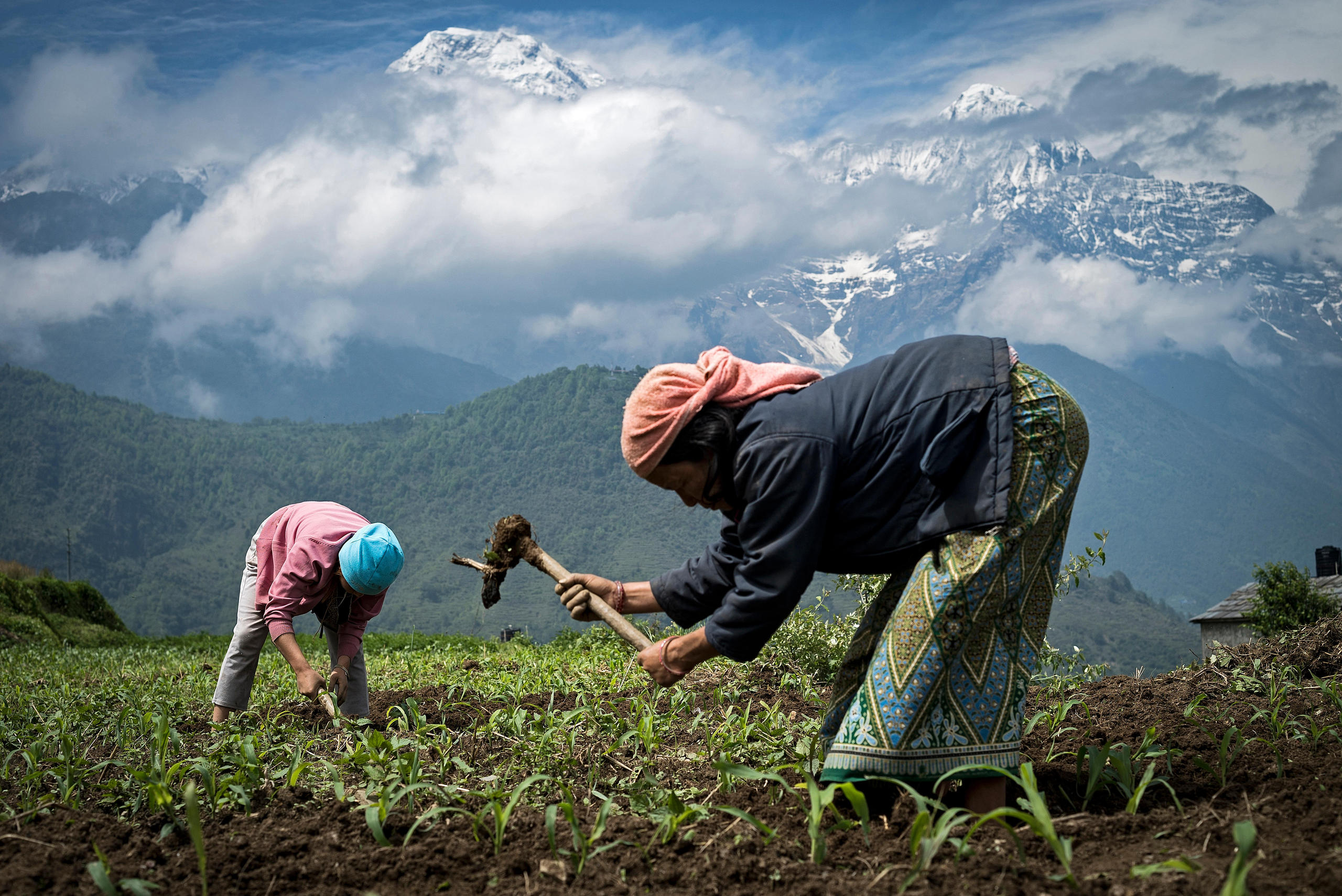
The 2022 FIFA football world cup in Qatar shone a spotlight on the plight of Nepali migrant workers in the Gulf, but the price paid by their wives back home goes unacknowledged.
It’s been a little over six months since Suntali Tamang became a widow. Her husband Tirtha Bahadur Tamang left home in 2021 to work as a labourer in Qatar. Less than a year later he fell ill and had to be hospitalised. A migrants’ organisation, the Pravasi Nepal Coordination Committee, helped bring him back to Nepal, but he never made it to his village of Padaali in Dhulikhel municipality, just a couple of hours away from the capital by bus or shared taxi. Tirtha Bahadur died a week after being admitted to a hospital in Kathmandu.
“He could not come home and see the house he helped build,” says Suntali.
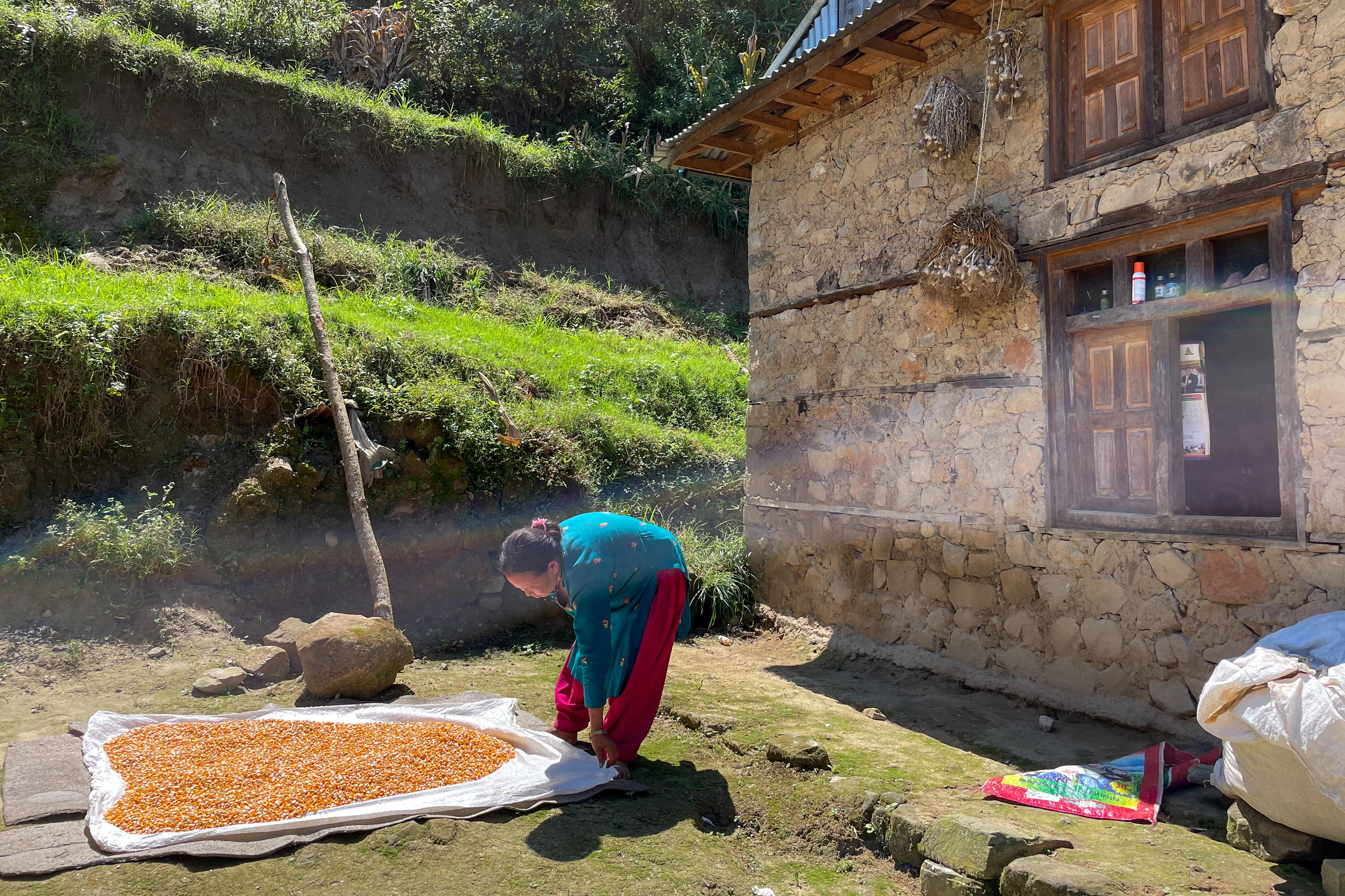
Their home was destroyed in the 2015 earthquake, and the family lived in a makeshift hut nearby. They had used Tirtha Bahadur’s earnings from his previous two-year stint in Malaysia prior to the earthquake, as well as a loan, to build a house. But he left for Qatar before it was ready.
Suntali now has to look after their four children on her own. It costs NPR20,000 to NPR30,000 (CHF135 to CHF200) a month just to educate them. Her social standing in her community is also under pressure. She finds it difficult to contribute her share to family festivities.
“I struggled to come up with money for my nephew’s Bratabandha ceremony,” she says, referring to a coming-of-age ritual performed in a boy’s teenage years.
Suntali has chickens and a cow, as well as a small patch of farmland that provides subsistence for the family for up to five months a year. She works as a farm labourer to make ends meet.
She gets emotional and tears up when asked what her biggest challenge is. A neighbour says it is dealing with the loss of her husband, who was a good man. In the year 2021-2022, a total of 1,395 Nepali migrant workers (including 39 women) died, with most deaths attributed to “natural causes”. However, this has not dissuaded the younger generation from seeking their future abroad.
“My elder daughter is learning Korean as she wants to migrate there. It costs NPR20,000 for a six-month course,” she says.
A Migrant Resource Centre External link(MRC) jointly funded by the Swiss Agency for Development and Cooperation (SDC) and the Nepalese government has helped Suntali access compensation she was entitled to as the widow of a migrant who died in foreign employment. She received NPR700,000 (CHF4,700) from the company her husband worked for, NPR700,000 from the Nepal Foreign Employment Board and NPR1,300,000 (CHF8,800) from the insurance company. She attends financial literacy classes at the MRC to learn how to use the money wisely.
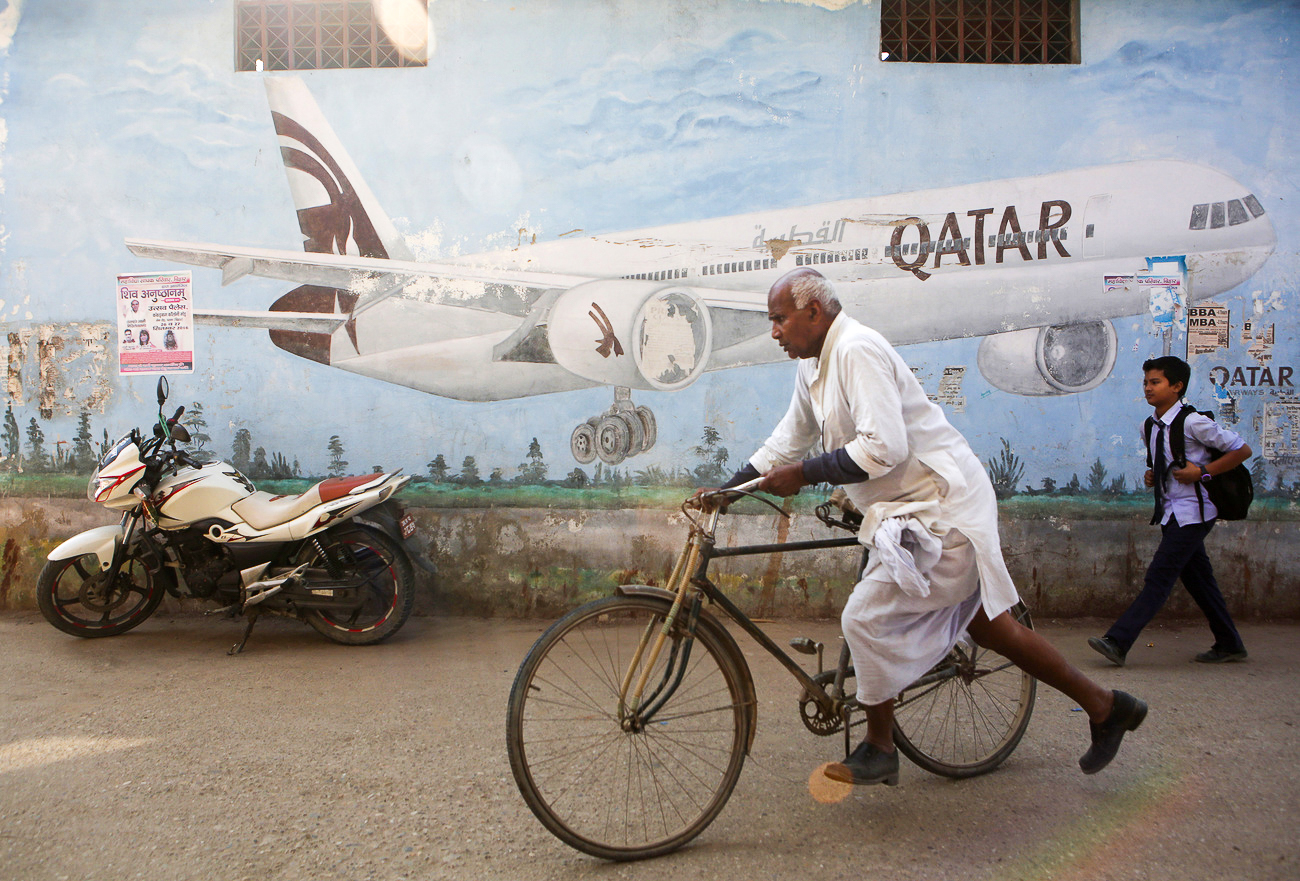
More
Swiss help for Nepalese migrant workers is at a crossroads
Scraping a living
Suntali is one of the lucky ones. Binod Ghorsaine, a returnee migrant who is paid by the Swiss project to identify migrant families in need and refer them to the MRC, guides SWI swissinfo.ch on his motorbike to his village of Mitinichhap to meet another widow who is in less fortunate circumstances.
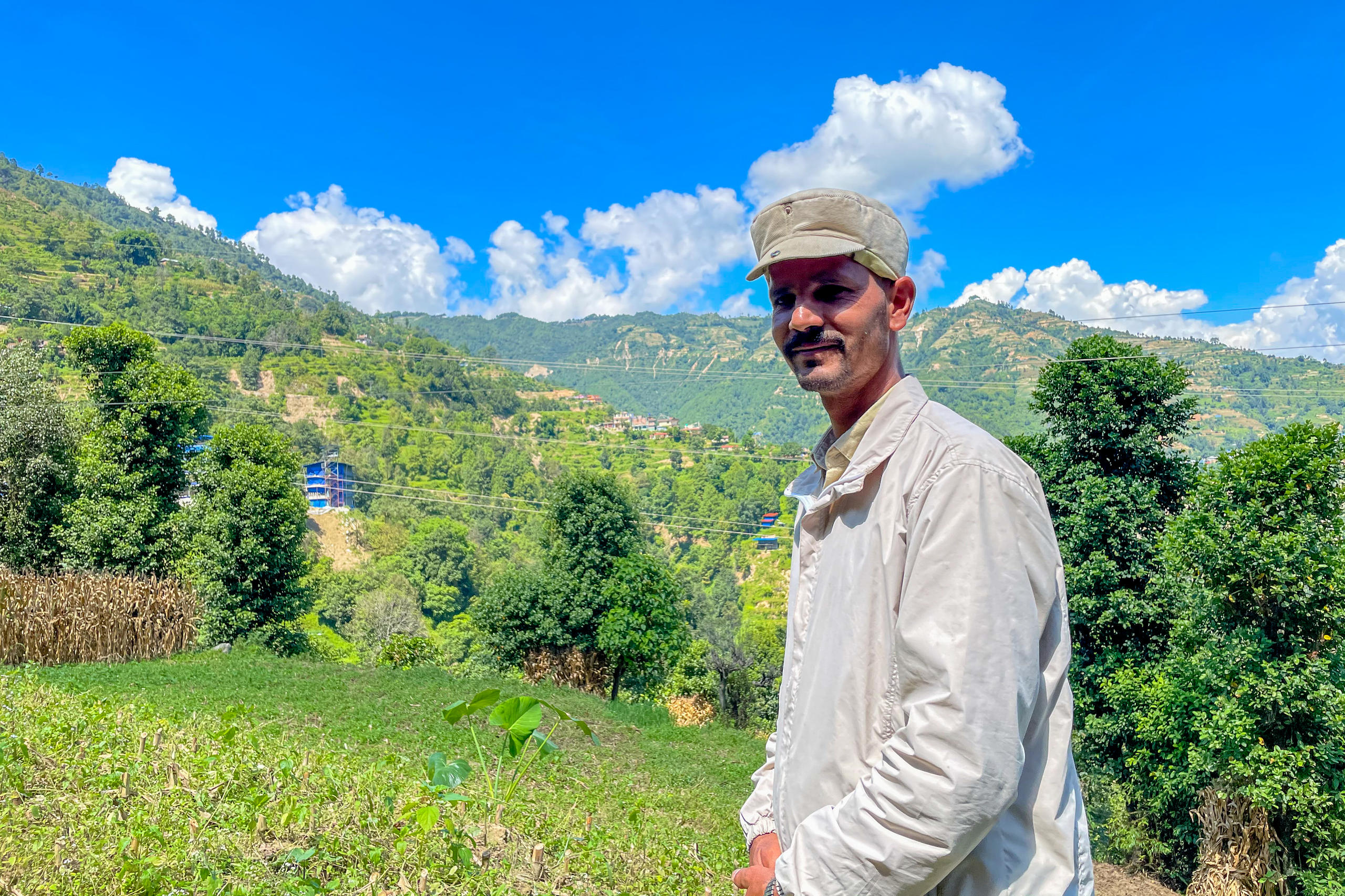
Rampyari Ghorsaine is in a hurry as she is late for work. She earns some money as a farm labourer working in other villagers’ fields. Despite running late, she doesn’t skimp on hospitality and offers water to drink and guavas to eat.
Her husband wanted their two sons to get a better education, but he was rebuffed by his relatives when he expressed a desire to send them to private school. This pushed him to seek work abroad, and he left for Qatar in 2008.
“For the first three months I had no information from my husband. There was no phone in the village. He then sent NPR40,000 (CHF270) and a few months later I enrolled my elder son in a private school,” she says.
Rampyari’s husband died a mere ten months after starting work as a labourer in Qatar. His death was attributed to natural causes by his employer, which meant there was no right to compensation. At the time there were also no provisions from the Nepali government for migrant widows, and the migrant insurance scheme was only introduced six months after his death. All Rampyari received was NPR100,000 (CHF675) from the company and the recruitment agency coughed up NPR20,000 (CHF135) to cover the cost of the funeral rituals.
Nepalese migrant workers have to take out a life insurance policy with a private insurer that guarantees a payout of at least NPR1 million (about CHF6,750) for the period of their contract and an additional six months. The cost of insurance premiums depends on the age of the workers and is regulated by the government. They start at NPR3,308 (CHF22) for a two-year-period and can go as high as NPR9,063 (CHF61). Workers also have to pay an additional NPR400 (CHF2.70) for insurance against critical illness for which they are entitled to a payout of up to NPR500,000 ($3,400).
Depending on the duration of their contracts, migrant workers also have to pay NPR1,500 to NPR2,500 (CHF10 to CHF17) into a Foreign Employment Welfare Fund. Families of migrants who lost their lives abroad are entitled to a one-time compensation of NPR700,000 (CHF4,700), and up to the same amount for injuries and illnesses. In total, Nepal’s Foreign Employment Board paid out NPR769.95 million (CHF5.2 million) as financial assistance to families of deceased migrant workers in the year 2020-21 through the Foreign Employment Welfare Fund.
“My husband was not an educated man, and I was worried he would find it difficult to manage abroad. I felt we could have a better life here together. We have some land and can survive,” she says.
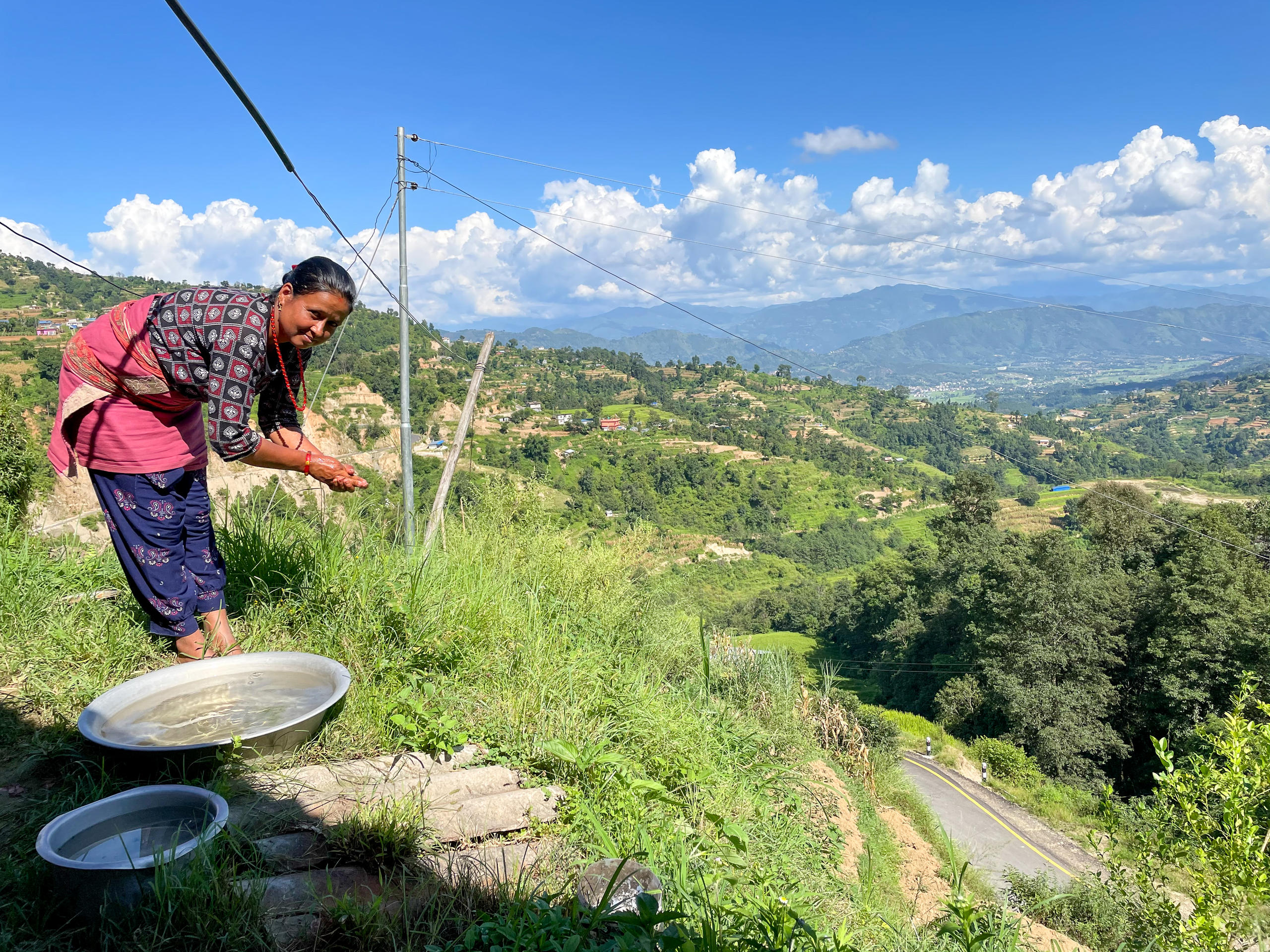
After her husband’s death, Rampyari was aloof, did not sleep well and was on medication for depression. She received psychological counselling from the MRC to better deal with her loss. She also has to deal with not having her elder son by her side. Despite her reluctance, she took out a loan of NPR1.5 million (CHF10,100) and sent him to Japan to study.
“I am against migration and would not advise anyone to send their family abroad,” she says.
Bailing their husbands out of trouble and burning out
Maili Tamang of Danda Sim village is not a widow but she almost became one. She took out a loan of NPR125,000 (CHF850) from a cooperative to pay the recruitment agency their commission to send her husband Gyan Bahadur Tamang to Malaysia.
He had worked as a migrant there 13 years ago and returned with enough savings to build a house, but it was destroyed by the 2015 earthquake. He decided to return to earn more money but was cheated by his agency.
“The agency promised me a salary of 900 ringgit (CHF170) a month, but I was paid only 700 ringgit. It was not sufficient for survival, and I ran away from my employer,” he says. “The government must crack down on agencies and companies that cheat migrants.”
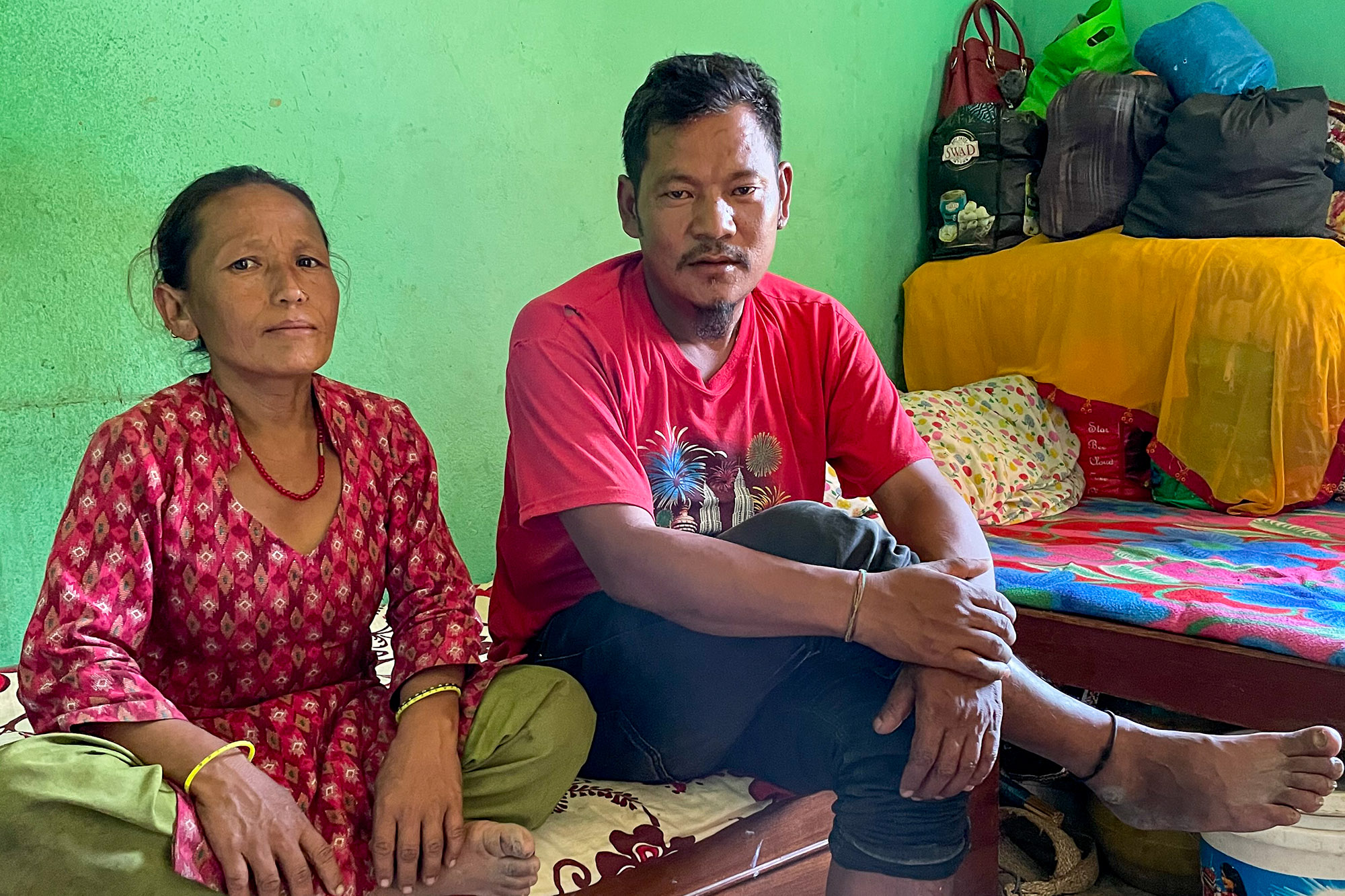
Gyan Bahadur continued working in Malaysia as an undocumented labourer until he fell sick due to a bladder stone. PNCC, the migrants association, helped get him treatment there and arranged his repatriation to Nepal, but Maili had to sell her jewellery to raise the remaining money to bring him back to the village.
“There are many families that earn a lot from migration and are able to buy land. But I had to sell my gold earrings,” she says.
It was very difficult for her to manage with three children on her own. She did everything from taking care of their education, paying off a loan to build the house to working in the kitchen garden. Despite working hard, she was unable to save money as her husband could not send any because of his own dire situation. Maili participated in a 21-week financial literacy class offered by the Migrant Resource Centre which prompted her to take a loan and buy a second cow. She also received psychological counselling to manage her stress and anxiety.
“She was so skinny when I came back. Now I let her sleep a bit longer and milk the cows myself in the morning,” says Gyan Bahadur.
According to Sharu Joshi, an independent expert on foreign labour migration and employment, the most negative impact of migration in Nepal is that women’s workload has increased immensely. Statistics from the International Labour Organization (ILO) show that Nepalese women perform 85% of daily unpaid care work, amounting to 29 million hours a day cumulatively, compared to just five million hours spent by men.
“This shows that women perform six times more unpaid work than men in Nepal compared to the average of four times in the South Asian region. Due to migration, whatever small contribution the Nepalese men were doing has also disappeared,” says Sharu.
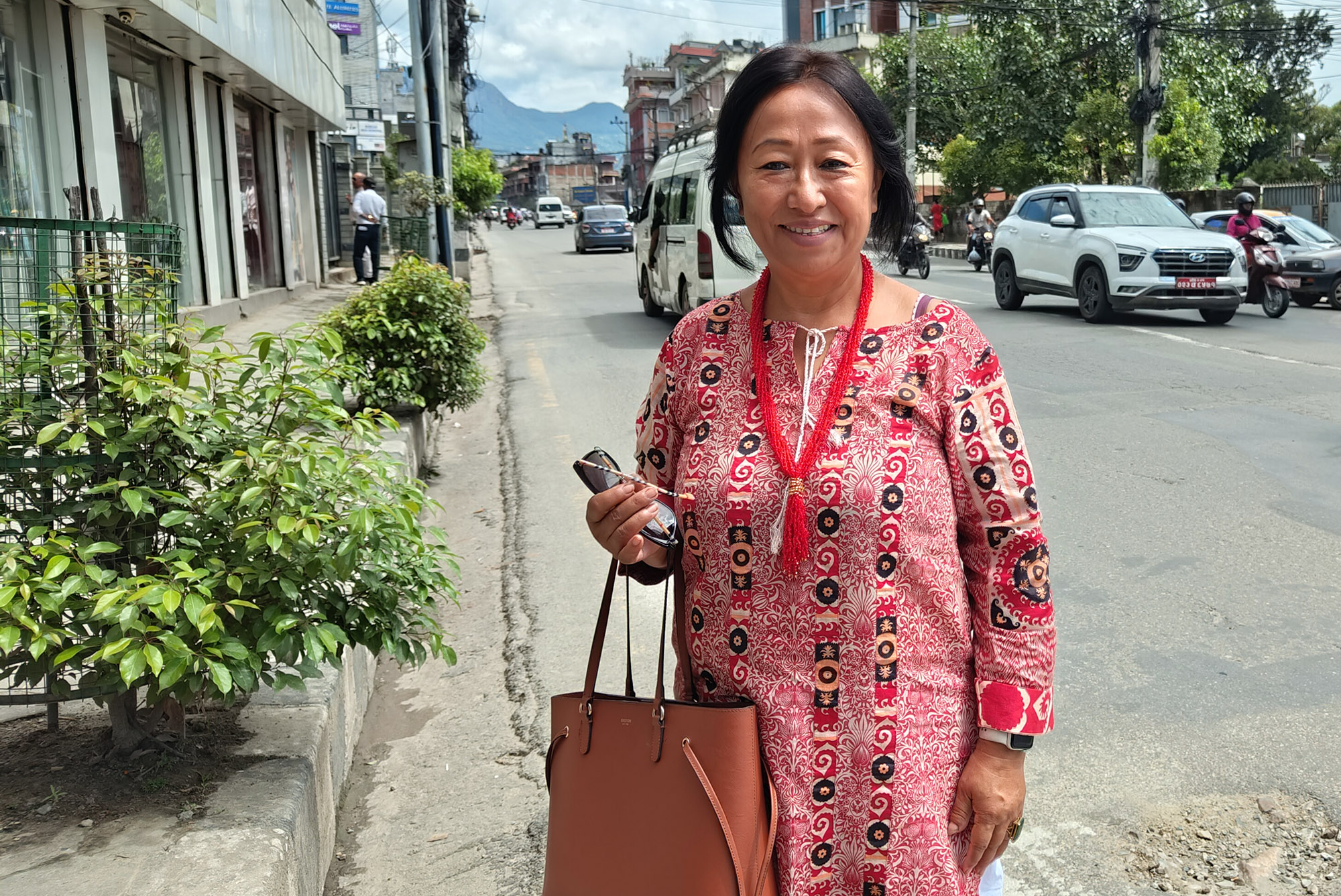
As proof, she points to Nepal’s recent success in meeting social indicators of development despite its cash-strapped government. The United Nations has deemed that the country reached its 2019 targets of social, economic and political empowerment as laid out in the Sustainable Development Goals.
“How is that possible? This is because the work that the state is meant to do like nutrition, family health and welfare is taken care of by women,” says Sharu.
Empty villages and suspicious husbands
Dandagaun village located in ward 2 of Dhulikhel municipality has a sex ratio of only 91 men for every 100 women (the national average is 95.6) based on the 2021 census. It also has the second-smallest household size in the municipality, with 3.83 inhabitants per household (the national average is 4.37). Migration of young men abroad is a fact of life here.
“In the early days people in the village supported each other. Now the village is empty,” says inhabitant Yasodha Gautam.
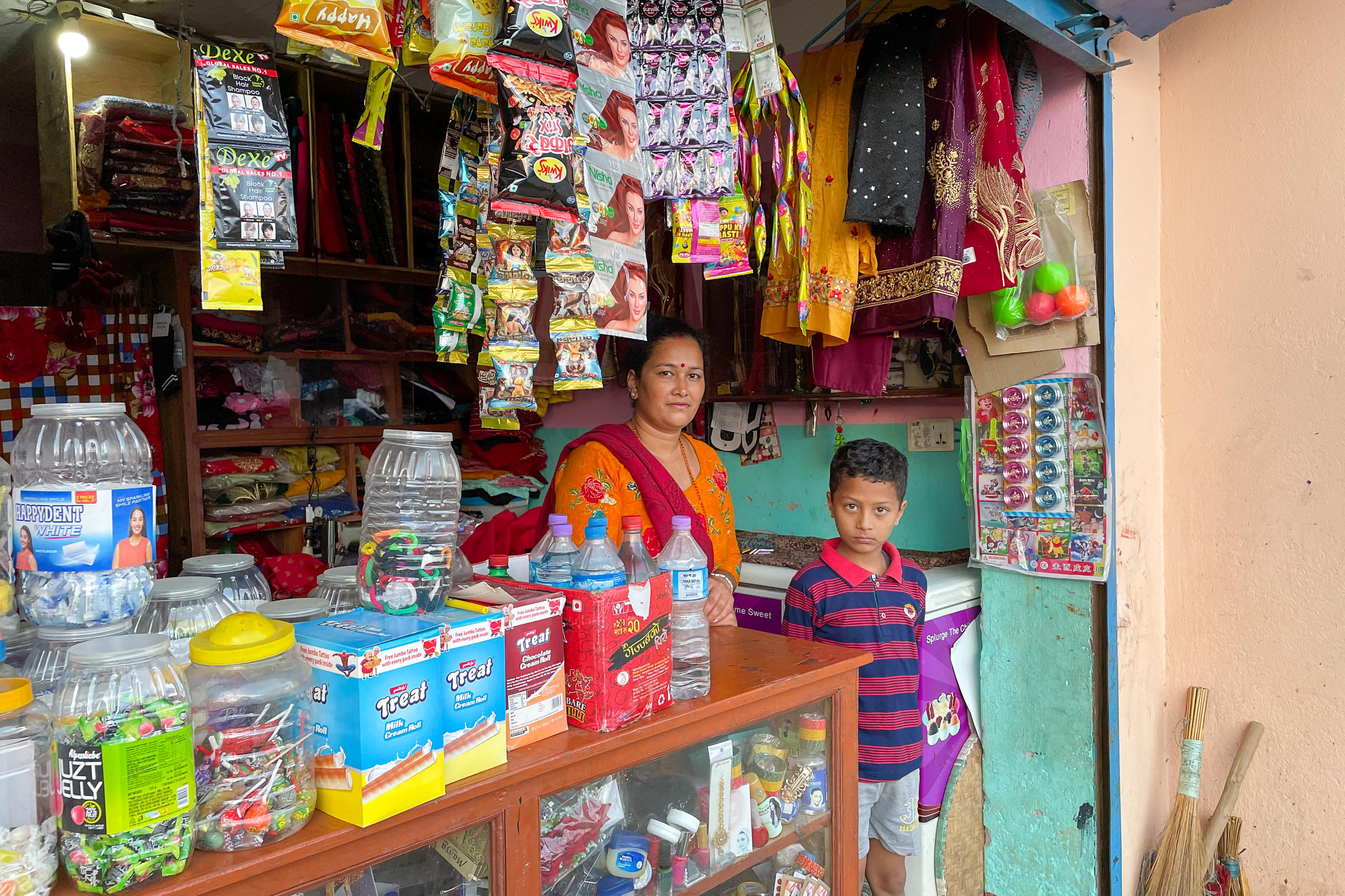
Her husband, a former soldier in the Nepalese army, has been working in Dubai for the last year and a half as a food delivery driver. Yasodha runs a small shop and looks after her two sons. She did not want him to go, but he wanted to see the world and send their children to good schools so that they can become senior officers in the army.
“I am neither happy nor sad. He is not here but he has gone for our future,” she says.
Bhim Prasad Sapkota, a senior public health administrator at Nepal’s ministry of health and population, is worried about the impact of migration on the country’s demography. The annual population growth rate has fallen from 1.35% in the 2011 census to 0.92% in the 2021 census, the lowest it has been since the first census of 1911. The total fertility rate has also fallen from 2.6 in 2011 to 2.1 in 2022, even though the use of modern contraception among married women between the ages of 15 and 49 has remained constant at 43% during the same period, according to the 2022 Nepal Demographic and Health Survey.
“The migration of the young population is affecting fertility but also economic and social development,” says Bhim Prasad. “It is something that has to be considered seriously by policymakers, politicians and civil society.”
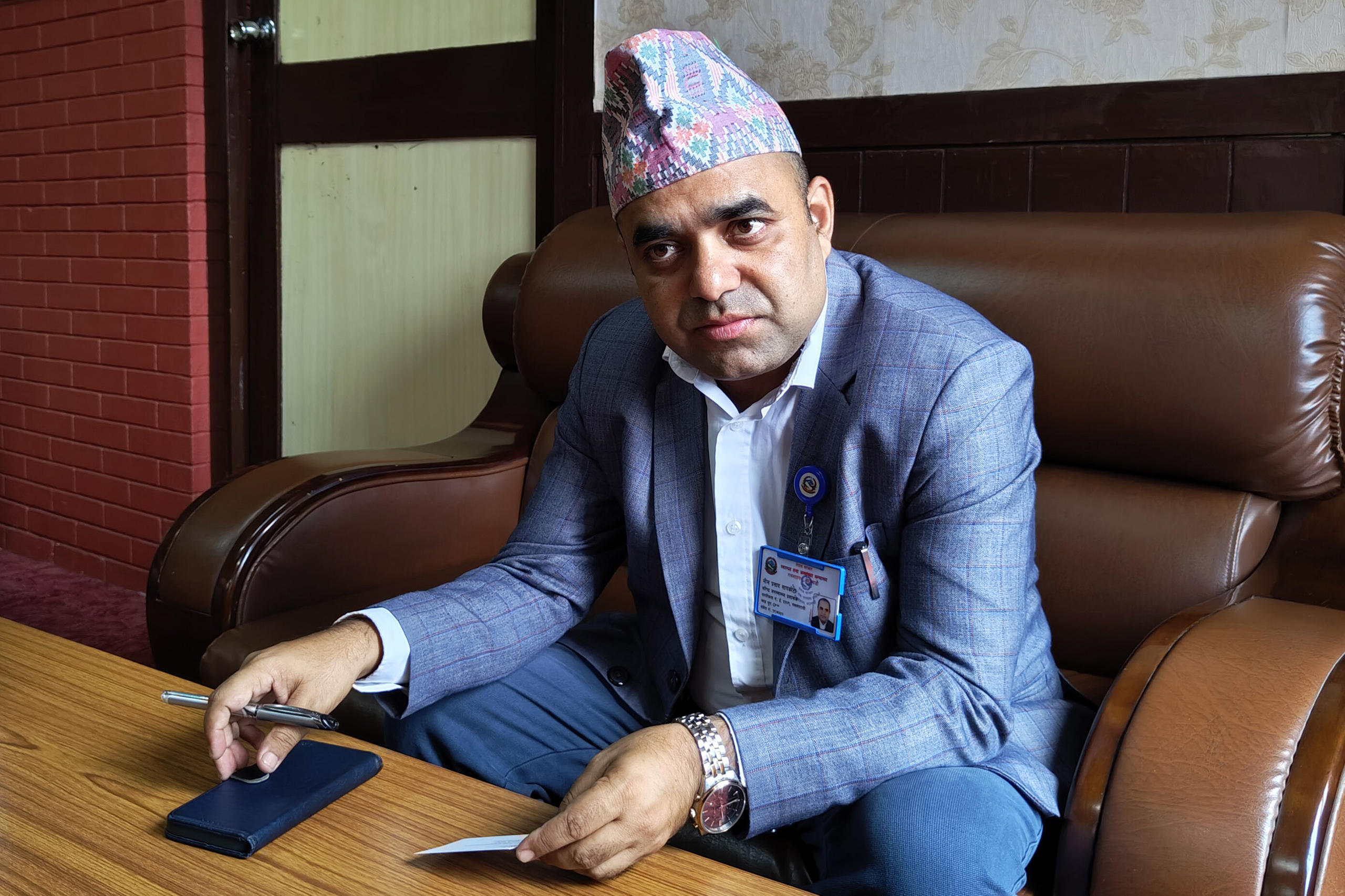
According to the 2022 Nepal Labour Migration Report, 7.4% of the country’s population lives abroad, but this figure does not include informal migration or migration to India, which does not need an official labour approval from the government. The closest to the truth is the 2021 census, which shows that 23.4% of households have an absent family member living abroad.
“We have youthless and toothless villages. Of the 77 districts in Nepal, 14 are in population deficit,” says Sharu Joshi, who previously worked for UN Women and the government. “Only 6% of the population now lives in the mountains, compared to 40% in the hills and 54% in Terai [plains].”
According to her, during the ten-year civil war there were around 200 people leaving the country every day, but today in times of relative peace and stability the exodus has increased to 3,000 people leaving every day. What the numbers do not show is the social pressure young men face to leave home and work abroad.
“There is a sort of competition within families over how many of their menfolk are working abroad. Migrants are perceived as more masculine while those who stay back are viewed as less mard [manly] as they do not take risks,” says Sharu.
The women who are left behind also risk being perceived unfavourably in their communities. A 2019 study funded by the Swiss Agency for Development and Cooperation surveyed over 1,000 migrant wives in Saptari and Dhanisha districts and found they were more likely to be suspected of misusing remittances and having extramarital affairs. However, researchers from the Nepal Institute for Social and Environmental Research that conducted the study found little evidence of this on the ground.
“There were in total three cases where women had extramarital affairs and that could have been the case even if the husband had not migrated. But stories were extrapolated, and it spread in different forms all over the district, false narratives are made and established,” state the authors of the study.
Articles in the press based on anecdotes have created a negative image of migrant wives and add fuel to the fire. It has created a general feeling of mistrust between couples.
“Not everyone’s migration is successful. Some men and women have second marriages [a euphemism for separation in Nepal],” says shopkeeper Yasodha.
More than money
Across the road to Yasodha’s shop is a restaurant run by Mirani Lama. Her husband shares the same room and does the same job in Dubai as Yasodha’s husband. She must manage the busy business and look after their son and household.
“It’s not very easy to run the restaurant by myself, but my brother and sister support me,” she says.
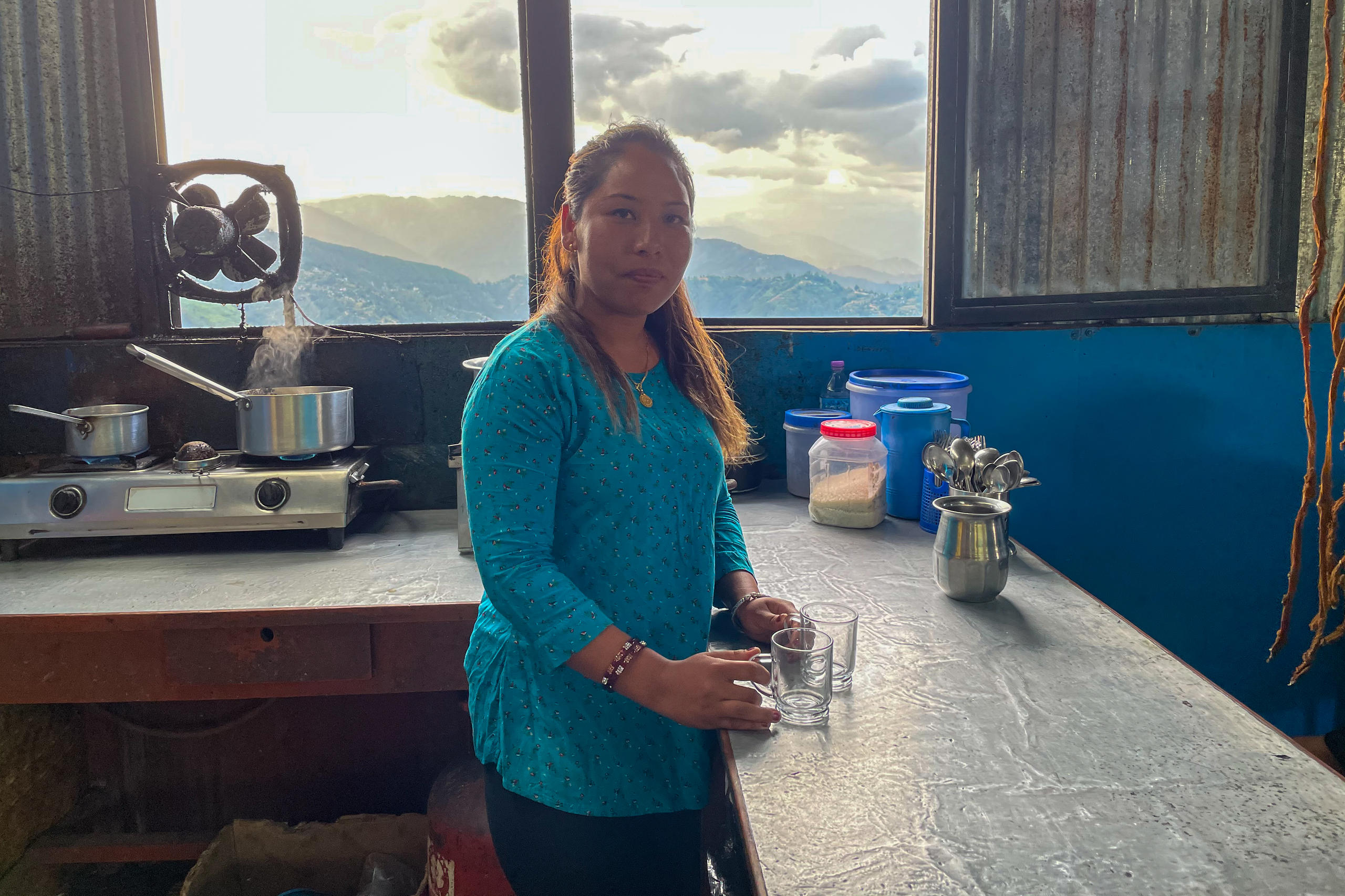
Mirani’s family needs the money from Dubai. Her husband sends NPR92,000 (CHF620) direct to her account every month. In 2021, official records show that migrants sent home remittances totalling NPR1.06 trillion ($7.15 billion), equivalent to 23.8% of Nepal’s GDP. It is no surprise that most conversations in Nepal on migration revolve around the remittances sent home. However, lately there is also some reflection on the societal cost of sending so many young men abroad. For example, the 2021 census shows that 17.1% of children live without their father.
“Migrant families have better access to health and education with the help of remittances. But their lifestyle is not as good due to the absence of a parent and the children’s growth and development as well as socialisation is negatively affected,” says government official Bhim Prasad.
The bureaucrat wants the government to design some policy interventions so that the Nepalese abroad can return to their country and start their own business based on the knowledge and skills they have acquired abroad. This way they can contribute directly to the national economy. Ultimately, this is only possible if returnees and their wives feel they have a better future in Nepal than in Qatar or Malaysia.
Most seem to want to return to work abroad given that the Nepalese Department of Foreign Employment has renewed 1.8 million labour approvals since 2011/2012. A 2021 Covid-19 assessment report of Nepal by the International Organization for Migration showed that 64% of those who had returned home due to the pandemic wanted to re-migrate.
Given the importance of remittances to the economy, the government has made it easier to renew labour approvals by allowing it to be done from the embassy in the destination country (up to two times) and even online.
“The country is running on remittances, but the politicians say they do not want people to leave and want the migrants to come back,” says Sharu.

As far as the two families interviewed by SWI swissinfo.ch in Dandagaun village are concerned, the future is mixed. Yasodha’s husband, who turns 40 next year, returns home from Dubai in six months. She does not want him to leave the family again for Dubai but knows she cannot stop him if he remains in good health.
“It’s not like there’s no future in the country, but if things are as they are, he will return abroad again,” she says.
Mirani’s husband returns home in ten months. She is looking forward to his return as they’ve made a major decision together.
“We’ve mutually agreed that he will not work abroad again. Instead, we plan to expand the restaurant,” she says.
Edited by Marc Leutenegger

Reporting for this article was facilitated by the Swiss programme EQDA (Looking Beyond)External link which organises an annual exchange of journalists between Switzerland and developing countries, with the support of the Swiss Agency for Development and Cooperation. The theme for 2023 is “Demography”.
Media organisations from the developing world are selected by EQDA for the journalistic exchange and the journalists in each tandem assist each other with their reportage in their respective countries.

In compliance with the JTI standards
More: SWI swissinfo.ch certified by the Journalism Trust Initiative





























You can find an overview of ongoing debates with our journalists here . Please join us!
If you want to start a conversation about a topic raised in this article or want to report factual errors, email us at english@swissinfo.ch.